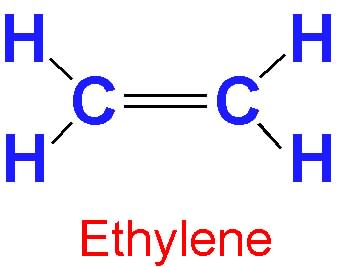There are two types of protective lotions – chemical and physical.

Sunblock, the physical kind, contains both organic and non-organic ingredients that sit on top of the skin acting as a barrier between your skin and damaging UV rays by reflecting or scattering UVB light. Look for products with octyl methoxycinnamate, octyl salicylate and octocrylene. In the past, you could tell who was using a sunblock just by looking, because the sunblock whited out the skin. Not all modern sunblocks are visible because the oxide particles are smaller, though you can still find the traditional white zinc oxide.
Sunscreen, the chemical kind, penetrates the skin and absorbs the UVA rays before they are able to reach and damage your dermal layer. Like a screen door, some light penetrates, but not as much as if the door wasn't present. Zinc oxide and titanium dioxide are the active ingredients in deflecting harmful UV rays before they reach the protective outer epidermis layer of your skin. Another ingredient to look for is ecamsule, which is a photostable sun protectant that blocks out photoaging UVA rays.
Sunblocks are formulated to shield against UVB rays, while sunscreens protect against UVA. In order to fully protect your skin, choose a broad-spectrum protection formulated sunscreen that will protect against both UVA and UVB rays (The “A” in UVA stands for ‘Aging’. The “B” in UVB stands for ‘Burning’). Luckily these days, formulas often contain a mixture of both sunblock and sunscreen.
What Sunscreens Screen ?
- UV-A penetrates deeply into the skin and can lead to cancer and premature skin aging.
- UV-B is involved in tanning and burning of your skin.
- UV-C is completely absorbed by the earth's atmosphere.
- PABA (para-aminobenzoic acid) absorbs UVB
- Cinnamates absorb UVB
- Benzophenones absorb UVA
- Anthranilates absorb UVA and UVB
- Ecamsules absorb UVA
What SPF Means ?
The portion of the sunlight that is filtered or blocked is ultraviolet radiation. There are three regions of ultraviolet light.
The organic molecules in sunscreen absorb the ultraviolet radiation and release it as heat.
SPF stands for Sun Protection Factor. It's a number that you can use to help determine how long you can stay in the sun before getting a sunburn. Since sunburns are caused by UV-B radiation, SPF does not indicate protection from UV-A, which can cause cancer and premature aging of the skin.
Your skin has a natural SPF, partially determined by how much melanin you have, or how darkly pigmented your skin is. The SPF is a multiplication factor. If you can stay out in the sun 15 minutes before burning,using a sunscreen with an SPF of 10 would allow you to resist the burn for 10x longer or 150 minutes.
Although the SPF only applies to UV-B, the labels of most products indicate if they offer broad spectrum protection, which is some indication of whether or not they work against UV-A radiation. The particles in sunblock reflect both UV-A and UV-B.

To Reapply or Not to Reapply?
Consider your personal needs and habits when deciding the best sun protectant. You may also need to consider your application depending on activity level. For instance, if you’ll be in the water or sweating a lot, it is best to reapply frequently. Sensitive skin may fare better with sunblock since titanium dioxide and zinc oxide are less irritating than some ingredients found in sunscreen.
Adding sunscreen to your daily routine can block UVA, promoting graceful aging and UVB, which can keep your skin from burning. With this new knowledge you can safely minimize your sun exposure risk and choose the right sunblock to best fit your lifestyle.

Consider your personal needs and habits when deciding the best sun protectant. You may also need to consider your application depending on activity level. For instance, if you’ll be in the water or sweating a lot, it is best to reapply frequently. Sensitive skin may fare better with sunblock since titanium dioxide and zinc oxide are less irritating than some ingredients found in sunscreen.
Adding sunscreen to your daily routine can block UVA, promoting graceful aging and UVB, which can keep your skin from burning. With this new knowledge you can safely minimize your sun exposure risk and choose the right sunblock to best fit your lifestyle.

Is there a difference between "waterproof" and "water-resistant" ?
How well the sunscreen stays on the skin after swimming, bathing or perspiring is just as important as the SPF level. The FDA considers a product "water-resistant" if it maintains its SPF level after 40 minutes of water exposure. A product is considered "waterproof" if it maintains its SPF level following 80 minutes of exposure to water. If you participate in outdoor recreational activities including swimming, you may want to choose a waterproof sunscreen.
The Bottom Line on Sunblock vs Sunscreen:
1. Most lotion is a combination of both sunblock and sunscreen, so read the ingredients carefully if you are needing a pure sunblock.
2. Be sure to look for a sunblock or sunscreen that does NOT contain vitamin A and its derivatives, retinol and retinyl palmitate, as this may speed up the cancer that sunscreen is used to prevent.
3. Be sure to check the Environmental Working Group’s searchable database of all sunblocks and sunscreens before headed to the store to find the ones safest and most effective for you and your family.






